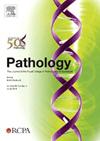新出现和再出现的病毒感染的中枢神经系统在澳大拉西亚和超越。
IF 3.6
3区 医学
Q1 PATHOLOGY
引用次数: 0
摘要
中枢神经系统(CNS)的病毒感染在世界范围内不断出现和复发,大洋洲地区也未能幸免。同为人类肠道病毒的A71肠病毒和D68肠病毒很可能取代即将被根除的脊髓灰质炎病毒,引起与神经系统疾病相关的全球暴发。虽然在其他地方流行,但新出现的正黄病毒,即日本脑炎病毒(基因型IV),于2021年在澳大利亚引起了人类感染,而且几乎肯定会继续这样做,因为该国流行的自然动物宿主-媒介生命周期的溢出效应。另一种正黄病毒——墨累谷脑炎病毒,已在澳大利亚重新出现。亨德拉亨尼帕病毒和尼帕亨尼帕病毒被世界卫生组织列为高危病原体,因为它们都能引起致命的脑炎。前者在澳大拉西亚仍然是一个健康威胁,因为蝙蝠可能仍然能够将感染传播给未接种疫苗的澳大利亚马和其他作为中间宿主的动物,并进而传播给人类。由新出现的严重急性呼吸系统综合征冠状病毒-2引起的全球COVID-19大流行与急性和长期中枢神经系统病理有关。冠状病毒-2是一种首次在中国发现并由动物传播给人类的病毒。幸运的是,这些重要的嗜神经病毒的病理和发病机制现在得到了更好的了解,从而产生了更好的管理方案和预防策略。病理学家处于一个独特的位置,有助于诊断和进步我们的传染病知识。这篇综述总结了目前在澳大拉西亚和其他地区一些重要的新发和再发中枢神经系统感染的一些知识。本文章由计算机程序翻译,如有差异,请以英文原文为准。
Emerging and re-emerging viral infections of the central nervous system in Australasia and beyond
Viral infections of the central nervous system (CNS) have been emerging and re-emerging worldwide, and the Australasia region has not been spared. Enterovirus A71 and enterovirus D68, both human enteroviruses, are likely to replace the soon-to-be eradicated poliovirus to cause global outbreaks associated with neurological disease. Although prevalent elsewhere, the newly emergent orthoflavivirus, Japanese encephalitis virus (genotype IV), caused human infections in Australia in 2021, and almost certainly will continue to do so because of spillovers from the natural animal host-vector life cycle endemic in the country. Another orthoflavivirus, Murray Valley encephalitis virus, has re-emerged in Australia. The Hendra henipavirus together with Nipah henipavirus are listed as high-risk pathogens by the World Health Organization because both can cause lethal encephalitis. The former remains a health threat in Australasia because bats may still be able to spread the infection to unvaccinated Australian horses and other animals acting as intermediate hosts, and thence to humans. The global COVID-19 pandemic, caused by the emerging severe acute respiratory syndrome coronavirus-2, a virus transmitted from animals to humans that was first described and first arose in China, is associated with acute and long-lasting CNS pathology. Fortunately, the pathology and pathogenesis of these important neurotropic viruses are now better understood, leading to better management protocols and prevention strategies. Pathologists are in a unique position to contribute to the diagnosis and advancement in our knowledge of infectious diseases. This review summarises some of the current knowledge about a few important emerging and re-emerging CNS infections in Australasia and beyond.
求助全文
通过发布文献求助,成功后即可免费获取论文全文。
去求助
来源期刊

Pathology
医学-病理学
CiteScore
6.50
自引率
2.20%
发文量
459
审稿时长
54 days
期刊介绍:
Published by Elsevier from 2016
Pathology is the official journal of the Royal College of Pathologists of Australasia (RCPA). It is committed to publishing peer-reviewed, original articles related to the science of pathology in its broadest sense, including anatomical pathology, chemical pathology and biochemistry, cytopathology, experimental pathology, forensic pathology and morbid anatomy, genetics, haematology, immunology and immunopathology, microbiology and molecular pathology.
 求助内容:
求助内容: 应助结果提醒方式:
应助结果提醒方式:


